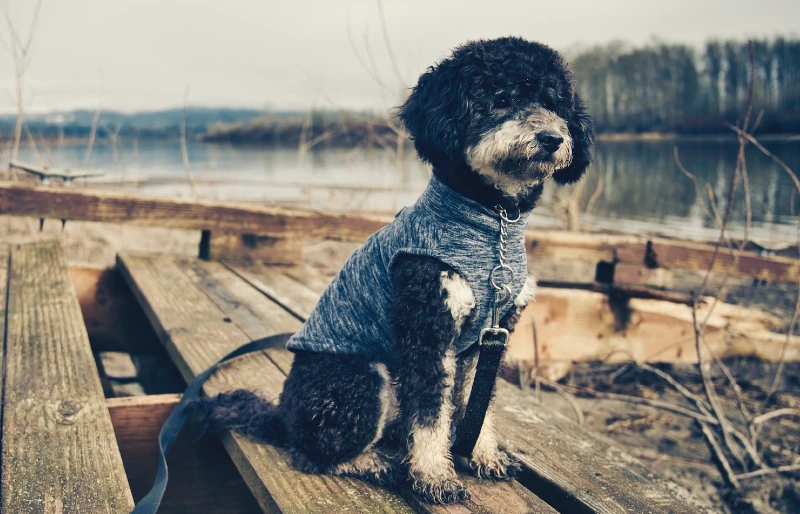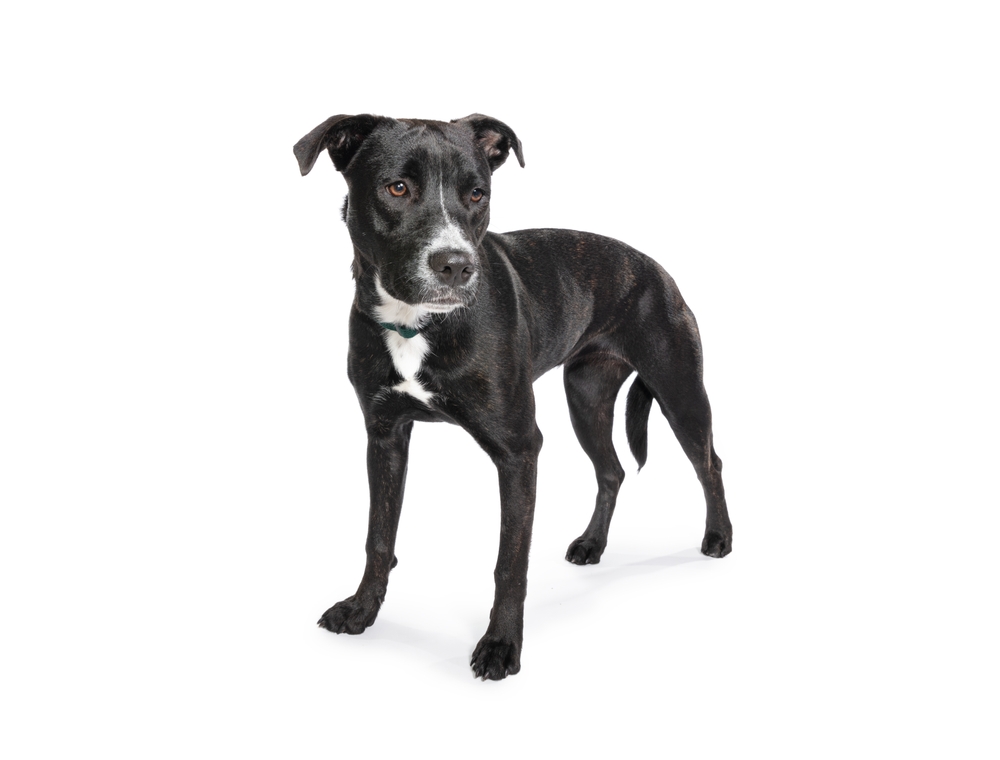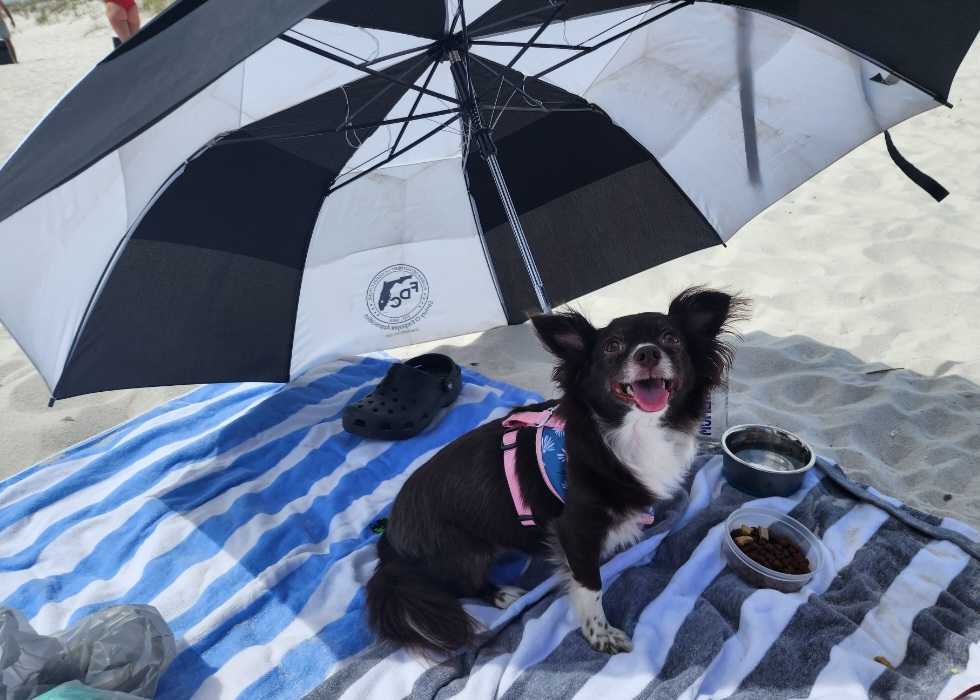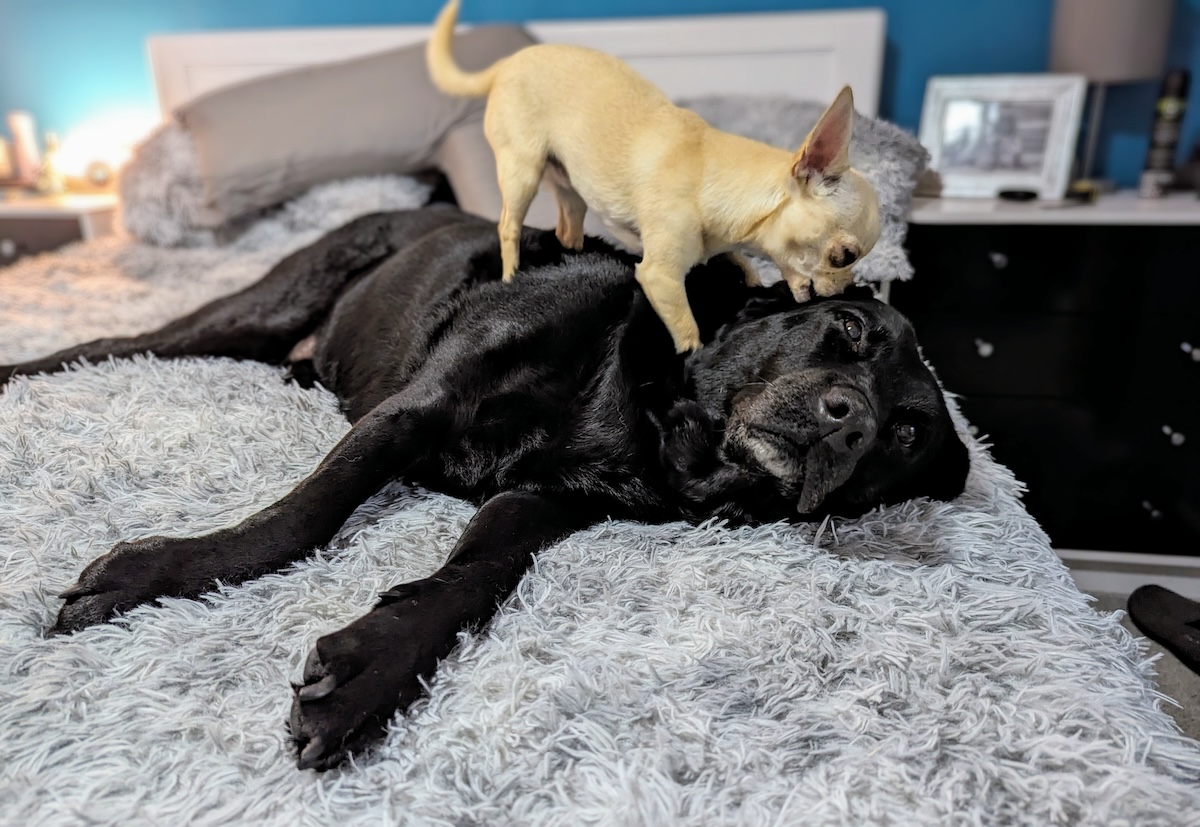Click to Skip Ahead
You’re probably familiar with the Goldendoodle, which is one of the most well-known hybrids or “designer” dogs. A Phantom Goldendoodle may sound haunted, but they’re just a rare and beautiful color variation of this popular breed. Keep reading to learn more about the history and origins of the Phantom Goldendoodle, along with whether they make good pets.
Breed Overview
Height:
Petite Mini: <14 inches; Mini: 14–17 inches; Medium: 17–21 inches; Standard: >21 inches
Weight:
Petite Mini: <25 pounds; Mini: 26–35 pounds; Medium: 36–50 pounds; Standard: >51 pounds
Lifespan:
10–15 years
Colors:
Black, chocolate, silver, or red primary color with tan, red, cream, white, gray, silver, apricot, brown, or white secondary color
Suitable for:
Families or individuals looking for an active, friendly, often low-shedding dog
Temperament:
Good with kids, good with other dogs, intelligent, loving, social, eager to please
A Phantom Goldendoodle is identified by their color pattern, which consists of a darker solid color over most of the body and lighter hair in specific locations. Acceptable solid colors include black, silver, red, and chocolate. Light colors include all these (except black,) along with cream, white, tan, and apricot.
The Phantom Goldendoodle typically has lighter coloring on the chest, feet, legs, muzzle, and eyebrows. For a good reference point, consider how a Doberman or Rottweiler is patterned.
Phantom Goldendoodle Breed Characteristics

The Earliest Records of the Phantom Goldendoodle in History
Goldendoodles were first bred in the late 1990s, following the introduction of Labradoodles. The first Labradoodle was intended to serve as a guide dog for a person with allergies, but they have also spawned an entire industry of “hypoallergenic” crossbreeds.
Phantom Goldendoodles probably also emerged around this time, but we don’t for sure when the first dog with this color pattern was born. Phantom Goldendoodle coloring is extremely specific and relatively uncommon. In the early days of Goldendoodle breeding, there was no good way to predict which combination of Golden Retriever and Poodle coloring would produce a Phantom dog.
Phantom Goldendoodles could have been some of the earliest representatives of their breed, or it could have taken several generations for them to emerge. All we know is that they’ve been in existence for no more than a few decades.
How the Phantom Goldendoodle Gained Popularity
The Phantom Goldendoodle was developed to fill a specific role as a companion animal. Golden Retrievers are among the sweetest and most popular purebred dogs, but they also shed heavily. The addition of low-shedding Poodle DNA resulted in a hybrid dog with the friendly nature of a Golden Retriever and the coat of a Poodle.
Goldendoodles come in many colors, but the Phantom pattern is one of the most striking. With most Goldendoodles featuring solid coloring, the Phantoms gained popularity for their unique, photo-worthy appearance. The fact that they’re also rare and hard to breed deliberately also played a role! Like other Goldendoodle varieties, breeders eventually began to offer different size Phantoms in response to popular demand.
Formal Recognition of the Phantom Goldendoodle
The Goldendoodle breed has yet to be officially recognized by the American Kennel Club (AKC) or similar associations in other countries. However, there is an official breed club, the Goldendoodle Association of North America (GANA).
This association functions like the AKC but is specifically for Goldendoodles. For example, it has a set breed standard covering recognized colors and coat patterns. The Phantom Goldendoodle is among the colors allowed by this standard.
The GANA also provides a way to “register” your Phantom Goldendoodle and offers lists of breeders who follow its code of ethics. This precaution is essential for rare colors like the Phantom Goldendoodle. Unethical breeders may ignore health concerns in favor of breeding dogs simply for the desired color.
Top 3 Unique Facts About the Phantom Goldendoodle
1. Their Coat Appearance Varies Quite a Bit.
Besides the specific color pattern that distinguishes a Phantom Goldendoodle, you’ll find variation in their coat appearance. Their hair can be either long or short, depending on their generation. You’ll also find curly, wavy, or straight-coat textures.
Advances in genetic testing have allowed breeders to be more accurate in producing litters with specific coat types and lengths.
2. They Aren’t Truly Hypoallergenic.
This one may surprise you, but no dog is entirely hypoallergenic. Phantom Goldendoodles typically shed less than other breeds, but the degree of shedding can also vary. In addition, dog allergies are generally triggered by saliva and dander proteins rather than hair, as many believe.
Dogs that don’t shed much are considered more allergy-friendly simply because they keep the triggering proteins to themselves instead of releasing them into the environment. Many Goldendoodles don’t often shed because of their Poodle parents, but the Golden Retriever is a shedder. Phantom Goldendoodles that take after that side of the family may shed more than you expect.
3. The Color That They Are Born Is the Color That They Stay.
Phantom Goldendoodles may be rare, but you won’t have to guess whether your new puppy will display this beautiful color before you agree to buy one. These dogs are born with phantom colors and patterns already established. You don’t have to wait to see if they develop them.

Does the Phantom Goldendoodle Make a Good Pet?
Phantom Goldendoodles make good pets for most owners and living situations. They are often easier for people with allergies (or those who prefer not to deal with pet hair) to live with. Phantom Goldendoodles generally have loving, social, and friendly personalities. Most of them get along with kids, other pets, and strangers.
They are intelligent and love to please, making them easy to train. They have a lot of energy and need daily exercise, and they don’t like to be left alone and may develop separation anxiety with behavioral issues.
Goldendoodles can inherit genetic health conditions from their parent breeds, with Golden Retrievers especially prone to problems. It’s best to find a breeder who performs recommended health screenings on all breeding dogs. Depending on their coat type, Phantom Goldendoodles may need to see a professional groomer regularly for trims.
Conclusion
Phantom Goldendoodles are one of the most interesting-looking color variations of the hybrid breed you’ll find. However, they also have lovely personalities and charm. If you’re interested in adding a Phantom Goldendoodle to your family, be prepared to spend some time searching for a reputable breeder.
You may also need to pay a higher price than for other Goldendoodles or put your name on a waiting list. Before you go through all this trouble, ensure you’re prepared for the financial and time commitment of keeping the Phantom Goldendoodle happy and healthy for their full lifespan.
Featured Image Credit: Kevin Butz, Unsplash











